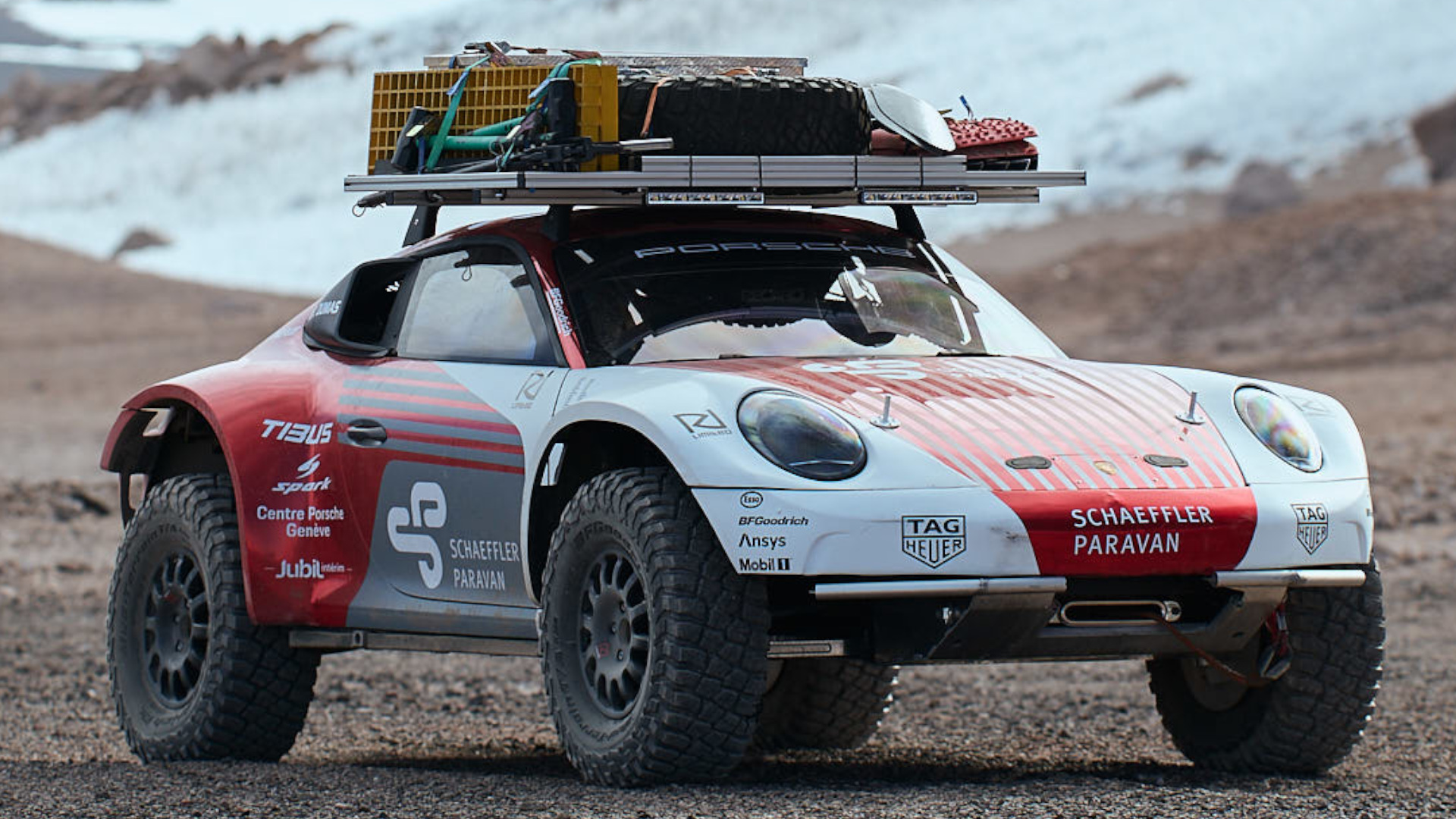

Porsche has built a pair of Safari 911s, and taken them on a rough and tumble journey through Chile. It’s a demonstration of just how potent a Safari 911 can be off-road, and a reminder that we sadly can’t buy one of these amazing vehicles.
The plan was simple. Endurance racer Romain Dumas would lead an expedition up the slopes of Ojos del Salado, the highest volcano in the world. The team would drive a pair of ruggedized 911s built specifically for the task. Driving at altitudes up to 19,708 feet, the cars would face ice fields, temperatures of -22°F, and an atmosphere with half as much oxygen as at sea level.




Two all-wheel-drive Porsche 911 Carrera 4S models were modified for the adventure. The 443-hp flat-six engine was left untouched. Beyond that, the drivetrain was modified with lower gear ratios for more wheel torque and finer control. Portal axles were added to increase ground clearance to an impressive 13.7 inches, more than even a contemporary Land Cruiser. Bodywork was also revised to help house the mighty 12-inch wide off-road tires.
The cars also featured Porsche’s “Warp-Connecter,” which was initially developed for motorsport use. It’s designed to mechanically link all four wheels to allow for constant load and maximum traction even when the suspension is at maximum articulation. Manual differential locks were also installed to help the cars handle tough off-road conditions. A steer-by-wire system was also used, likely necessary due to the high suspension lift compared to stock.




Roll cages, carbon fiber seats, and harnesses were fitted to keep the crews safe. Aramid fiber underbody panels were also installed, designed to allow the cars to slide over rocks. The engine’s cooling system was moved higher to reduce the likelihood of damage, and each car also scored a winch, just in case. Both cars wore a custom livery; one was generally 911-themed, while the other wore the Porsche Motorsport colors featured on the 963 LMDh race car.
“For the team and the car it was about learning – and right out of the box, the car was tough and nimble. We were hard on ourselves and really put it in the deep end for its first test, yet it felt at home,” said Romain Dumas. “We went over 6,000 meters up, to the point where the walls of ice and snow meant we could go no further. We’re really proud of what the car and the team are capable of first time out.”




The 911 is typically known as the sports car, and it also has a long and storied racing history. Ever since Porsche took its first “Safari” examples to the East African Rally in 1978, though, it’s also known for being a riot off the beaten track. Suspicious prototypes have hinted that Porsche might be developing a production Safari model, but nothing is confirmed as yet.
It seems unlikely that a mainstream model would feature expensive specialist hardware like portal axles, and a steer-by-wire setup seems like it could compromise on the 911’s handling and feel. It may be that Porsche simply wanted to demonstrate what an ultimate Safari 911 build could achieve. Conversely, if the company is looking at doing a special limited-run model, it could just get all the fancy hardware we’ve seen here.
Either way, the Safari 911 concept is much-loved, and one that enthusiasts can’t get enough of. Here’s hoping Porsche actually starts selling them en masse, rather than just teasing us with amazing builds like these.

Got a tip? Let the author know: lewin@thedrive.com